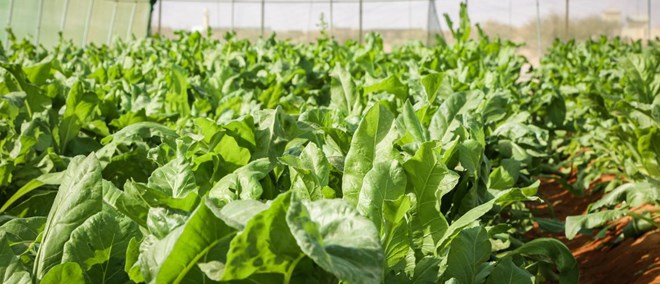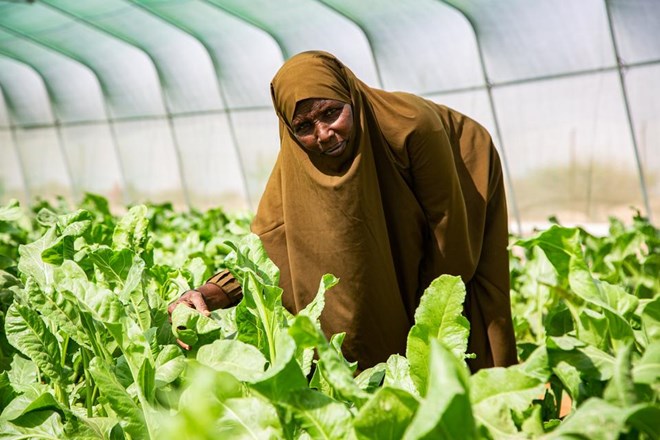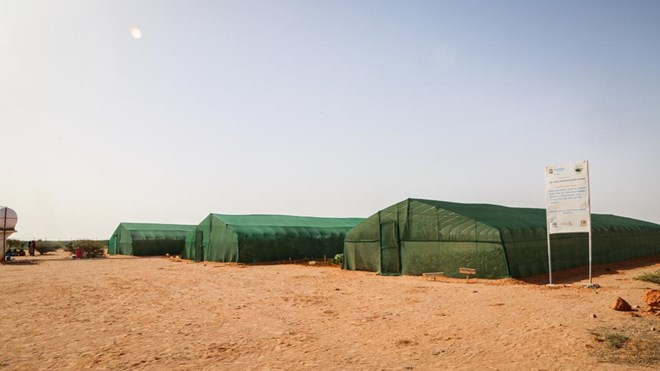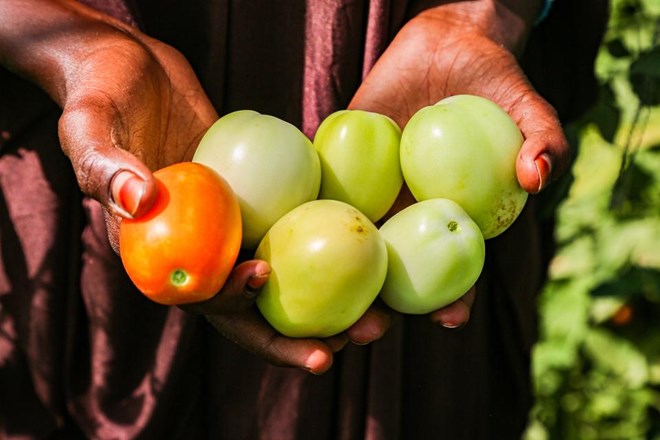
Friday June 17, 2022
By Said Isse

The introduction of greenhouse farming to drought-ridden Dharjaale, a village in eastern Somalia, has allowed people to benefit from an alternative source of income.
After losing three hundred goats and walking nearly 260 kilometres, Zainab Mohamed, a pastoralist mother of five, left behind her livelihood and the habitat she grew up in after a severe drought hit Somalia in 2017.
Today, she owns a small farm built with transparent materials, known as greenhouse farming. Several such farms are owned by pastoralist families after losing their livestock to droughts.
Along with 25 families, Zainab formed the Dharjaale farmers association in Dharjaale village, in eastern Somalia. Prior to this, the families were pastoralists in the countryside where they roamed bushes to herd livestock.
Zainab recalled how she left her home five years ago to save her family.
“It was a hard choice that I never wanted to make. My grandfather was born in those bushes, and we kept animals as a source of pride and income. We sold their meat and milk in the local market,” Zainab told TRT World.
“But I watched my livestock die before me because there was no water or pasture for them to survive,” she continued.
In Puntland State, where Zainab lives, farming is not popular and most families are pastoralists who live in huts made of grass, sticks and clothes in the countryside. They herd goats, sheep, and camels, and migrate to the bushes looking for pasture and water for their animals.
But life in the countryside has become very difficult as they battle recurring droughts triggered by climate change. This year, the worst drought in 40 years is crippling the livelihoods of millions across the country.
According to United Nations, about 7.7 million Somalis need humanitarian assistance, while nearly a million people were displaced due to the unfolding crisis this May.
Earlier this year, UK-based charity Save the Children said nearly 700,000 animals died because of the drought, and the value of livestock has significantly dropped leaving millions of people without food.
“I can relate to the experiences of many of these families. I faced the same few years ago, and I did not know what would happen to my family.” Zainab says.

Zainab Mohamed, a pastoralist mother of five, stands inside her farm. (Said Isse / TRTWorld)
Farming as an alternative source of income
The majority of the families in Dharjaale were affected by the recurring droughts. Ahmed Ali, the mayor of Dharjaale village, says residents relied on pastoralism as their primary source of income.
“When you talk to elder people who lived in this area, they did not have a history of farming. We all depended on livestock, and we herded thousands of them in the bushes around the village. But now you would hardly find any family pastoralists,’’ the mayor said.
This meant people lost their livestock — their main source of income — and they did not know alternative methods of generating income until the community teamed up with a local aid organisation, KAALO, which implements climate change adaptation programmes in the region.
KAALO introduced the greenhouse farming concept in Dharjaale — structures made of transparent material that shades crops from inclement weather conditions and pests.
“Farming helped me create an additional source of income. Now, I can help my family go to the local market and buy basic food items,” Zainab said.
“Farmers in the village are also able to sell their products in the local market which used to depend on markets from other towns, which are as far as 400 kilometres away from our village, to get products like tomatoes and peppers,’’ she added.

The exterior of a greenhouse farming structure made of transparent materials that shades crops from weather conditions and pests. The structure was built by Zainab and other farmers to help protect their farms. (Said Isse / TRTWorld)
With this new farming method, Zainab and her neighbours believe it will help them reduce the cost of living in their village.
“Families in Dharjaale have reported improved access to food following implementation of the greenhouse farming in the village, compared to families who did not create alternative livelihood sources during difficulty seasons,” Muse Ahmed, Senior Climate Adaptation Project Manager for KAALO, told TRT World.
“We have noted despite consecutive failed rain seasons that families who have ventured into farming which helps families create different sources of income are more resilient compared to families who adapted to pastoralism as their only source of income,” Muse added.
Fatima, a member of the farmers’ association, says farmers have been able to sell their products and have so far generated $3,000.
“This means every family has been able to get about $107 from the farm. This amount is equivalent to selling two goats in the local market during a good season of rain,’’ Fatima told TRT World, emphasising how important it is for families who have lost their economic security due to droughts.

Zainab says the initiative helped her create a source of income for her family to recover from a devastating drought in 2017. (Said Isse / TRTWorld)
Climate change in Somalia
Somali authorities are also encouraging investment in climate change adaptation to ease the suffering of pastoralists.
While Somalia hardly contributes to greenhouse gas emissions, it is severely impacted by the effects of climate change.
In 2021, during the Glasgow Climate Change Conference (COP26), the Somali Federal Government Minister of Planning, International Cooperation and Economic Development, Gamal Mohamed Hassan, called on the international community to support countries like Somalia which have struggled with the impact of climate change.
“Somalia is among the most vulnerable countries to climate change effects, and climate crisis is one of the main factors that are impacting social-economic stability and ultimately impacting our national security,’’ Hassan said.
In the last decade, annual global greenhouse gas emissions were at their highest levels in human history, according to the Intergovernmental Panel on Climate Change’s (IPCC) latest report released in April.
From 2010, Somalia faced devastating droughts in 2011, 2017 and 2022. In 2011, a devastating drought killed about a quarter of a million people, about half of which were children below the age of five.
“But unfortunately, despite the least contributing countries to this problem, we are visibly paying the brunt of its effects…. [Somalis] are paying their lives and livelihoods,’’
Hassan said during his speech at the COP26 summit. The IPCC report warned of catastrophic conditions if immediate and deep emissions reductions across all sectors do not take place.
For Zainab and the farmers in the Dharjaale, greenhouse farming initiatives revive hopes for a better future, as they hope for improved weather conditions and a good harvesting season.